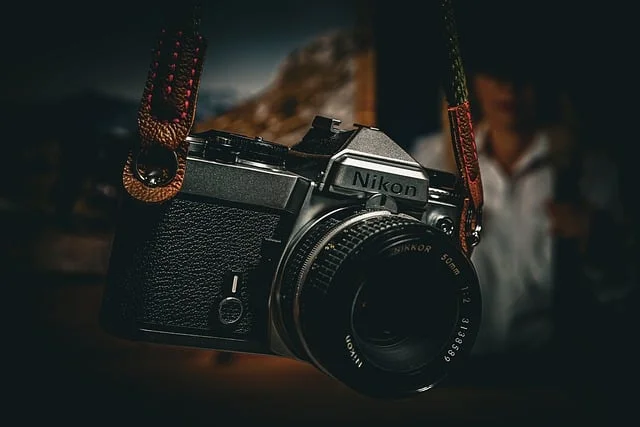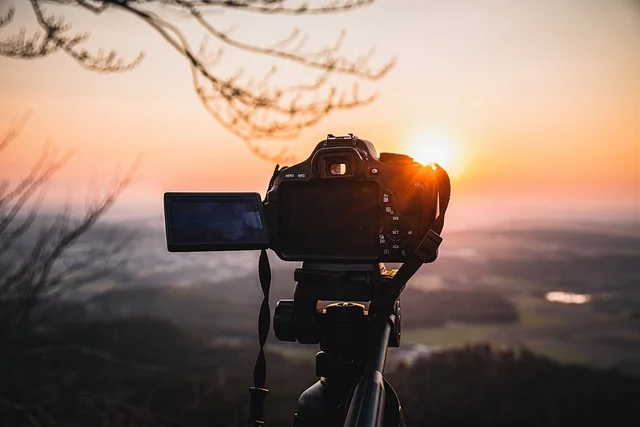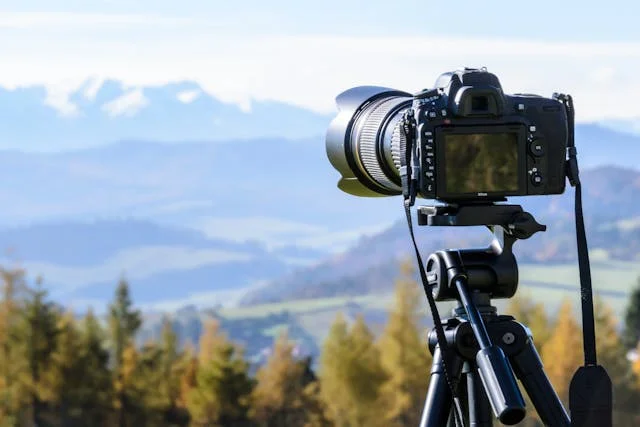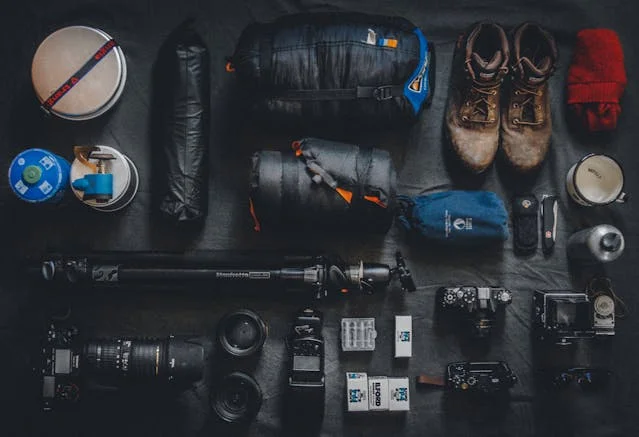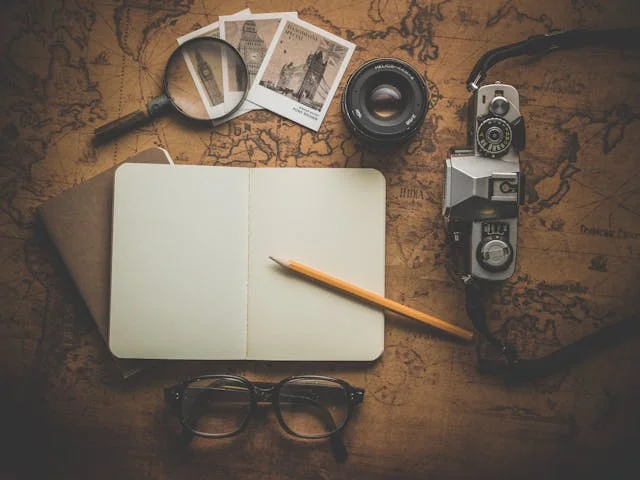A great travel photo is so much more than just clicking a button; it’s about capturing the essence of the journey and the stories lying behind every destination. All these places we visit, people we meet, and vibrant cultures that come our way form part of our adventure when we travel. And a good photo just brings back those memories, takes us back to those minutes of awe, wonder, and pure joy. Still, capturing those perfect travel shots feels daunting to most. This is most often when the beauty of the place does not come across as beautifully through a lens.
Introduction
The mastery of a few photography basics with a DSLR, mirrorless camera, or even a smartphone can make professional, striking, and uniquely personal images. From optimal camera settings to framing a shot with a creative vision, every technique you master will help sculpt your travel photos. The following guide is intentionally designed to make it easy, with practical tips any photographer-novice or seasoned-can use with ease.
The reader will be properly equipped by the end of this article to take spectacular travel photos that reflect the magic of your travels. You will learn about the best times of shoot, different techniques for creating memorable compositions, and even a few smartphone hacks for convenience. Whether you are creating an awe-inspiring photo album of your travel or sending your friends and family many more interesting pictures from your travels, here are ten expert tips that will help you beautifully capture all of your adventures. So, get ready to make the grade in your travel photography, every shot being counted!
10 Tips to Capture Stunning Travel Photos
Master the Basics of Your Camera
Knowing your camera inside and out is one of the first steps in taking quality travel photos. Since different cameras have different features, it is important to familiarize yourself with the settings of whatever camera you might be using. The basic things to know first are how the aperture controls the depth of field, the shutter speed controls the way motion is captured, and ISO controls light sensitivity. Knowing these settings and having practiced with them will give you decisions on the way each photo will look, and in due time, you will confidently be able to adjust them on the go.
Besides the fundamental components of the shot, learn the modes and functions of your camera. Most cameras will have landscape mode, portrait mode, and HDR setting among others, all intended to optimize these types of travel photos in the best possible way. Knowing these can save you a lot of hassle when you want professional-looking images in a hurry and are up against unsavory light conditions. Take several snaps in different settings if need be, to get a feel for what works best for each scene. It is the habit of trying different approaches that allows catching the right moment in the best way.
Most important, practice makes perfect. Before you leave for your trip, take the time with your camera in various settings and lighting to get accustomed to using it. Such practice will prepare you for real-life situations on the road with the certainty that whenever an occasion arises, you won’t need to fiddle with settings to make every shot possible. The more you are familiar with the camera, the more naturally you’re in a position to bring out its full potential in the creation of memorable travel photos.
The Power of Composition
The composition can make a shot that is ordinarily ordinary into something more. The rule of thirds is the first starting basic technique; it takes a photo and divides the frame into nine equal parts, placing the subject along lines and intersections. This basic rule adds balance and interest to the shot, making it more visually appealing. Instead of centering every subject directly, try to place important elements a little off-center. This gives the travel photo a little more dimension and allows the viewer’s eyes naturally to flow through the picture.
Another good technique of composition involves leading lines. Lines, like a road, a pathway, or even a river, will lead the viewer’s eye to some focal point in the picture. Leading lines create depth and even movement. Pay attention to the leading natural or architectural lines in a frame that may bring layers of interest in your shot: shooting through archways, windows, or foliage can provide an interesting perspective on the subject. These frames draw attention to your subject and add context to the travel photos.
Great images are often created by playing with the angles, testing perspectives. Do not be afraid to go down to the ground or shoot from above to find an unusual vantage point. Put all of those tips and tricks together, and you’ll get travel photos that seem well-composed and dynamic, turning any ordinary scene into a picture worth looking at.
Lighting: Making or Breaking Your Shot
Basically, most photography depends on light, and so is travel photography. Natural light makes all the difference in a photo, especially shooting in what is called the golden hour-the time shortly after the rising of the sun or before setting. This soft, warm light provides natural illumination and minimizes harsh shadows, eventually giving your photos that dreamy, professional look. Shoot during this time whenever possible for better landscape and portrait shots.
The sun is strong at noon, and the shadows are accentuated while the colors get bleached. Control this by looking for shade or objects such as trees or buildings to diffuse the sun. Alternatively, the sun’s shadow can be used as an element for contrast. Night shooting can allow more creative possibilities, particularly in cities or sites with ambient lighting. With a tripod and long exposure settings, you’ll be able to capture vivid and clear night scene shots.
Finally, do not underestimate the power of natural reflectors. A body of water, light-colored walls, or even the ground may reflect soft light on your model, enhancing her features without artificial lighting. With time, mastering these will teach you to make the most out of any given lighting condition so that your travel photos are well-lit and a pleasure to your eyes.
Capture the Local Culture and Atmosphere
Travel photography is not only about snapping the landscapes but also about documenting the peculiar culture and atmosphere of each location. This could be done through candid, natural shots of locals going about their day-to-day business. Approach this respectfully and capture real expressions and scenes rather than posed photographs of subjects. Events such as street markets, public parks, and festivals offer kaleidoscopic colors in the backgrounds and authentic moments to let the character of a place come out.
In addition to candid shots, look for unique landmarks and cultural elements that are symbolic of the destination. All places have something iconic-temple buildings, marketplaces, or traditional clothes-that speak to a story the local culture has to tell. These you’re able to capture in photos that will transport people into the heart of the destination through thoughtful framing. It doesn’t concern just the main tourist spots; all is in small details that express the daily life and spirit of the area.
Also, remember to mingle with locals whenever possible. A friendly smile, learning a few words in the local language, and asking for permission can be much more valuable to the experience-and often yields even better travel photo opportunities. These interactions not only enhance your travel experiences but also yield photos that reflect the friendliness and genuineness of the people you meet during your journey, completing it into a far more telling and interesting travel story.
Make Use of Natural Elements and Surroundings
Natural elements can bring so much to your travel photo: layering and textures that make an image quite immersive. Employing foreground, middle ground, and background is one of the easiest techniques for creating depth, especially in landscapes. You will add a sense of scale to the picture by including objects or natural features such as rocks, trees, or even flowers in your foreground that will draw viewers right into the scene. This layered approach adds dimensions and interest, making landscapes feel alive and tangible.
Use the landscape to your advantage when composing shots. Water, mountains, and skies can be very cooperative elements. Reflections in water may double the value of a scene; fog and cloud can add mood and intrigue. Welcome the weather conditions, too-sunny, rainy in the afternoon, or misty in morning-each has a different feel. While a landscape shrouded in fog can be perceived as moody, a bright, open sky can connote vibrancy and openness.
Learning to shoot travel photo with, rather than against, nature allows you to shoot images as they are and not rob the location of its beauty. Often, it’s the unplanned-the rain or the sudden setting of the sun, for example-that provide the most fantastic shots. Being flexible and receptive to whatever nature has in store will allow you to shoot images that are natural but at the same time creative, bringing out the raw essence of the destination.
Editing Essentials to Enhance Your Shots
Editing gives the final touch that transforms a good travel photo into a great one. Basic edits-meaning just brightness, contrast, and saturation-bring out the details and true colors of the photos, thus giving them a polished look. These are basic tweaks available even for novice learners through applications such as Lightroom or Snapseed. Editing should bring out the natural beauty of an image; therefore, it is best to make subtle adjustments that bring out the best of each photo without overdoing it.
As you get more comfortable, try some of the advanced editing tools-cropping and straightening, perfecting shot composition, and highlights and shadows for adding depth to your images. Other features, like selective adjustments that allow you to enhance particular areas in an image, are especially useful when trying to balance out uneven lighting or draw focus on to a subject. The development of these skills will enable you to form and shape your travel photos in the best way possible in regard to desired mood.
CHECK OUT – Road Trip Checklist: 15 Key Items for an Amazing Adventure
Consistency in editing will help establish a certain style in your travel photos. Using preset filters or custom settings will help with your style. That will make your photo collections cohesive, hence professional. Just remember that you want to enhance the story your photo is telling, rather than changing it. Therefore, think of these tools as an enhancement for making each shot the best it can be.
Smartphone Photography Hacks
Smartphones are awfully versatile for travel photography, and a few simple hacks will get amazing results. First, tap into some of those inbuilt features: Portrait mode, for a beautifully blurred background, or HDR mode to capture detail in high-contrast scenes. Learning these functions will help you to make full use of your smartphone’s capabilities and often eliminate the need to carry additional equipment.
Accessories can further help in improving your smartphone’s photography. For example, clip-on lenses will add variety to your shots, with options going from wide-angle shots to macro and telephoto perspectives. A small, portable tripod or remote shutter can provide stability, especially for low-light or night photography. These are fairly inexpensive, light to carry, and thus very suitable for travelers who want to take quality travel photos without carrying bulky equipment.
Finally, remember that the in-phone editing applications are very powerful tools that can be used for location adjustments. One can instantly adjust brightness, contrast, and color balance using apps like VSCO, Lightroom Mobile, or even those built-in editing tools. These can make a huge improvement in your photos and get them ready for sharing in minutes. By learning these hacks on a smartphone, you will be prepared to shoot stunning travel photos by just tapping a few options.
Essential Gear for Travel Photography
While high-quality travel photographs can be made using very little gear, there are a few accessories that can make the shooting-while-traveling process a lot smoother and easier to adapt to. A light tripod, for instance, is worth its weight in gold during long exposures, group shots, or even when you want shots steady in low-light conditions. Tripods come in compact, travel-friendly designs that fit into your bag easily, so you won’t feel any extra burden.
Others include extra memory cards and batteries that you should have with you as storage components. You end up getting frustrated during a trip if your memory storage is full or if you run out of power for your battery. This may be because sometimes you are far from the charging outlets or from storage solutions. With spares, you will have something left behind to fill those great memories without breaks. Such small investments could see you enjoy your travel photography.
Those who want something more professional might choose lenses and filters, which will lift the quality of the travel photos. A versatile lens, like a zoom or wide-angle lens, gives you more leeway when shooting everything from panoramic views right down to close-ups. Filters, such as polarizers or neutral density filters, will aid in managing reflections, enhancing color, and controlling tricky lighting situations. These additions are not necessary for the beginner but give creative possibilities that take your travel photos to a whole new level.
Safety and Respect While Shooting
The photographer should always take necessary precautions with regard to safety and respect in the new environment. Understandably, knowledge of local ways and etiquette may form the basis for some cultures being especially sensitive to cameras, in particular with respect to people and religious sites. If you shoot anyone close up, ask for permission-especially in places where travel photography may be intrusive or inappropriate. Respecting such boundaries allows better interaction and deeper understanding of the culture being captured.
Being constantly aware of one’s surroundings can be very important with regard to both personal safety and camera security. Cameras or phones might get misplaced or damaged in busy tourist areas; hence, always be very careful with your equipment and consider a safe camera bag. When traveling in remote or challenging environments, sometimes it is about your personal safety, so don’t get too carried away to get a shot. Sturdy shoes, sun protection, and familiarity with the lay of the land can prevent accidents, so you may shoot to your heart’s content.
Ethics also play a part in travel photography. It is best to avoid taking pictures of very vulnerable situations or people without prior consent. Be considerate with regards to what your impact will be on a community or an environment. Ethical photography is respectful to the dignity of all your subjects, ensuring your photographs really do tell a story truthfully and respectfully. Pay attention to prioritizing safety and respect, and you’ll take pictures that are not only beautiful but ethically conscious as well.
Planning and Scouting Locations
Preparation is the key to getting those amazing shots when traveling, and scouting out a location ahead of time can greatly enhance your potential output. Do your research through tools like Instagram, travel blogs, and Google Earth to have an idea about the well-known viewpoints, secret spots, and best times for photography. Knowing where you are going and how early you need to get there will put you in a position to be able to get the optimal lighting, avoid crowds, and find the best vantage point for each shot.
Early mornings and late evenings are good for shooting in areas with no crowds, especially for famous landmarks. The golden hour is never as crowded either, and the light for photography is best, so plan your shots around these times. In nature, research on seasonal conditions, weather forecasts, and times of sunrise or sunset will help you make use of each location to its fullest natural appeal.
While planning is important, be very open to unexpected opportunities. The best shots often come from moments of spontaneity-the unexpected street performer, a rain shower suddenly appearing, or a glimpse of wildlife. By balancing preparation with flexibility, you’ll capture photos that tell a complete, dynamic story of your travels, filled with both anticipated highlights and delightful surprises.
Final Thoughts
Travel photography isn’t about clicking pictures; it’s a way to save all those emotions, cultures, and landscapes that make every destination different. Practice these 10 expert tips, keeping in mind that improvement will come with time and practice. Enjoy the process of learning at each step and do not be too critical of imperfections. And with each click, one takes a memory, freezes a moment that may be shared sometime. Basically, travel photography is itself a journey, and just like travelling, it is often the lesser anticipated moments which give the most gratifying result.
Beyond technique, allow yourself to fully become submerged in the places you travel to. Photography’s a great medium with which to see the world in a new light, but it’s all about the balance between enjoying where you are and capturing that moment. Take your time to enjoy the views, speak with locals, and enjoy the culture-not just through your viewfinder but with your senses. These personal links will give depth to your photos, hence making them more realistic and warm to look at and build a travel story.
The most important function of travel photography, though, rests in how it brings you back to moments of joy, discovery, and wonder. Be it the sharing of photos with friends, building a personal travel album, or even just keeping memories close to your heart, each image will tell its own story. Pick up your camera, take these tips to heart, and get on with capturing the world your way-one beautiful photo at a time. Happy shooting, and may each shot enable you and other people to explore even more!

